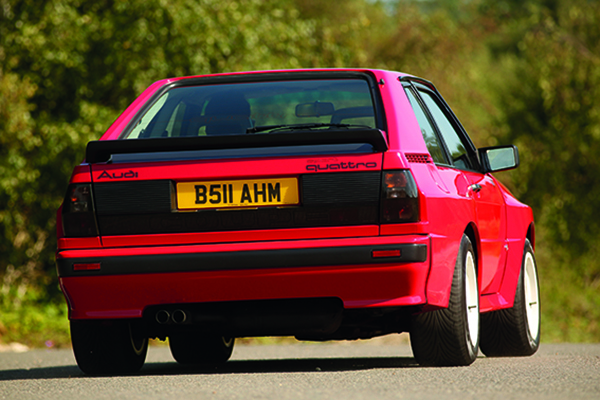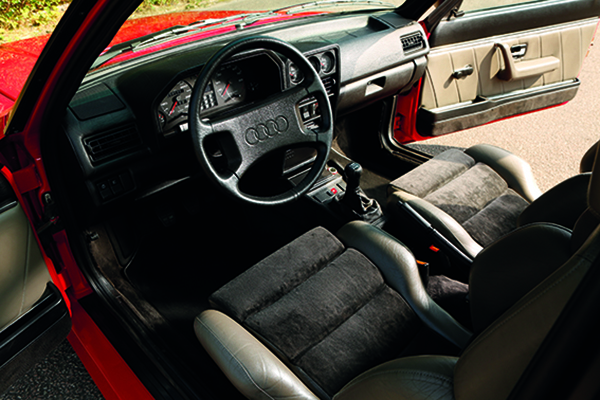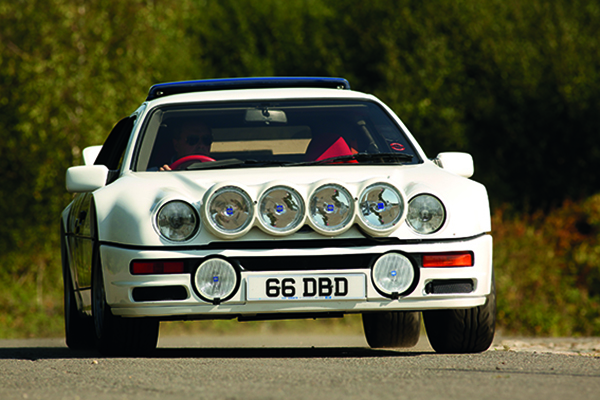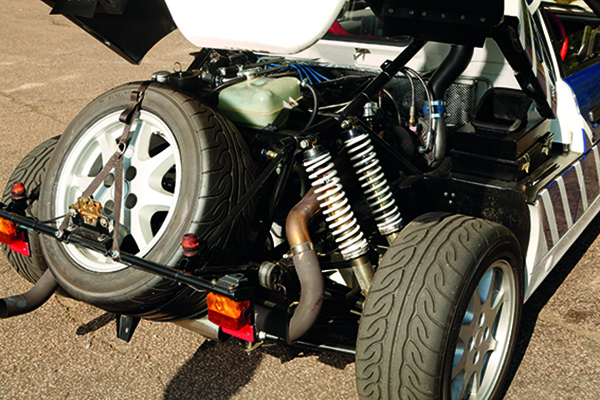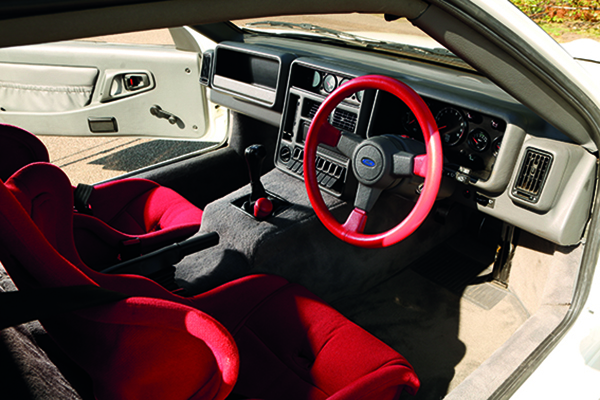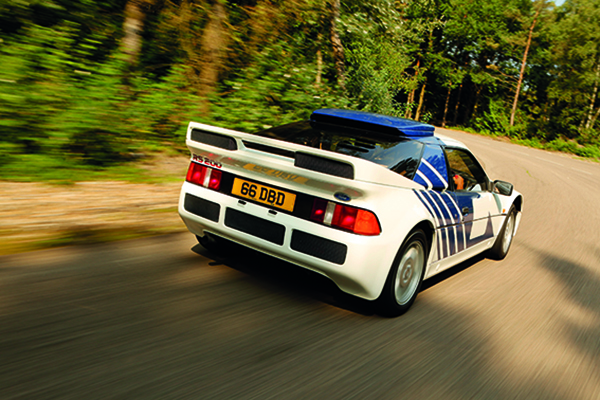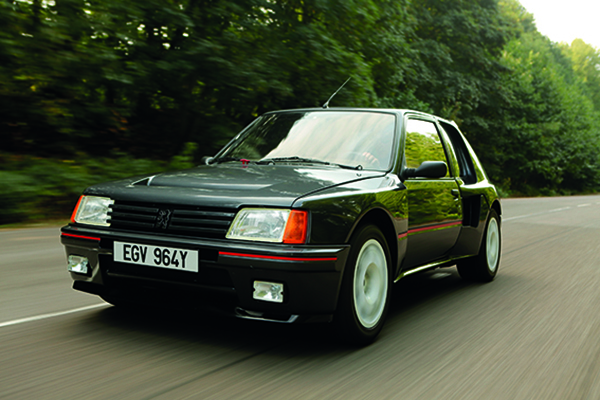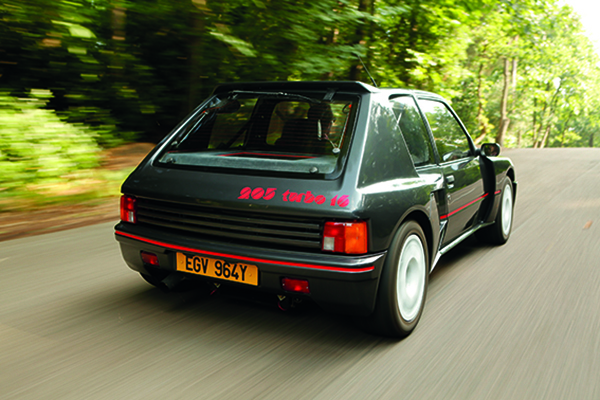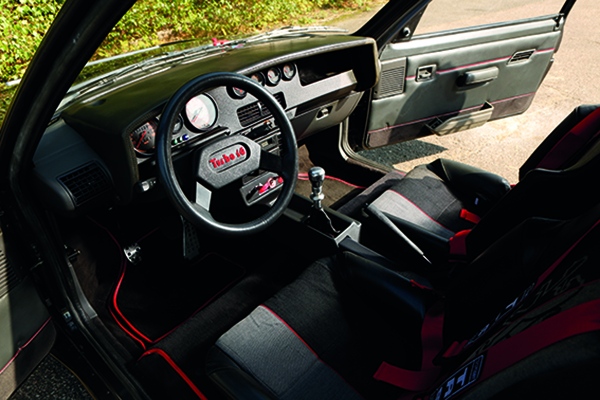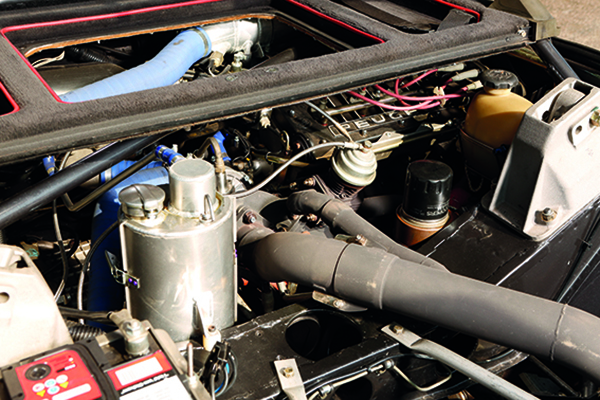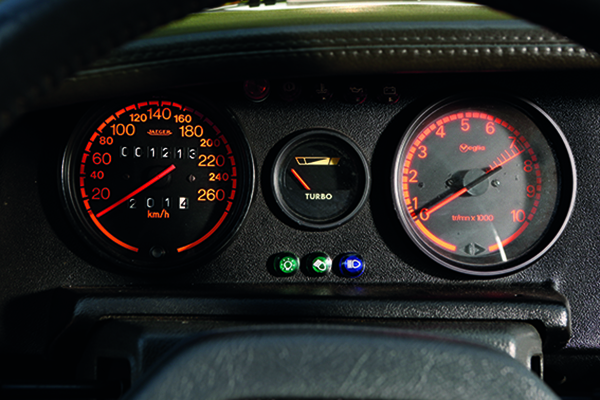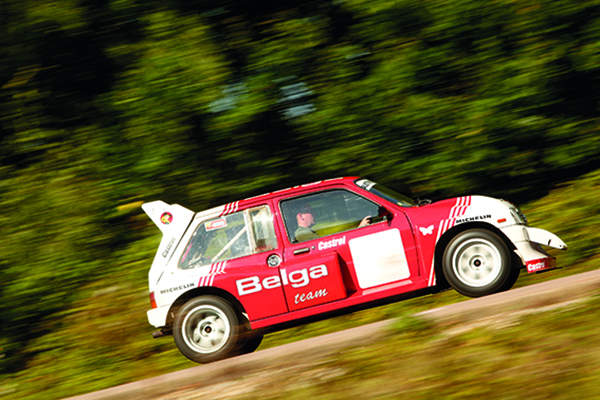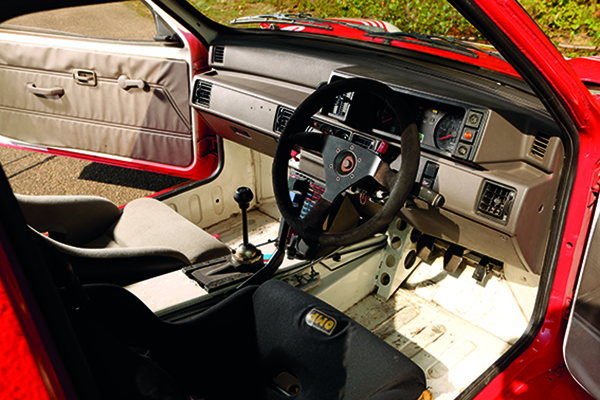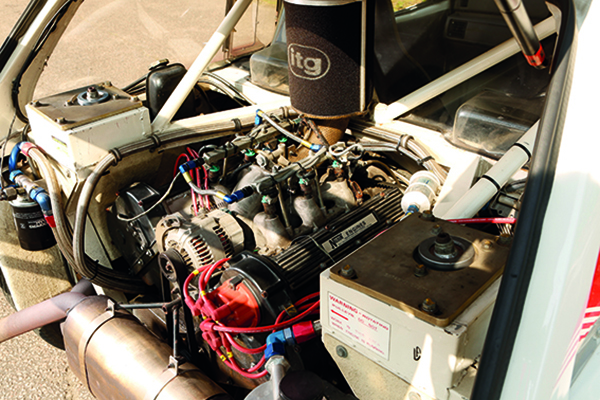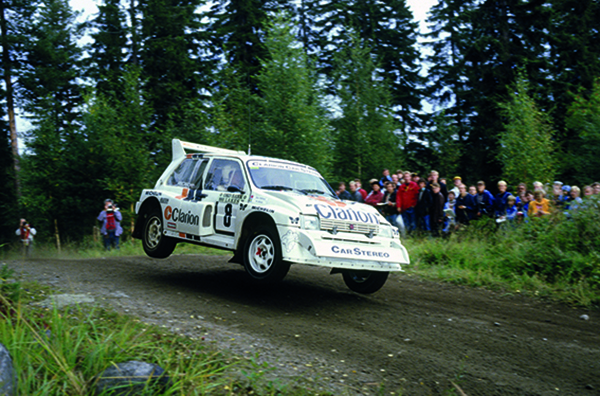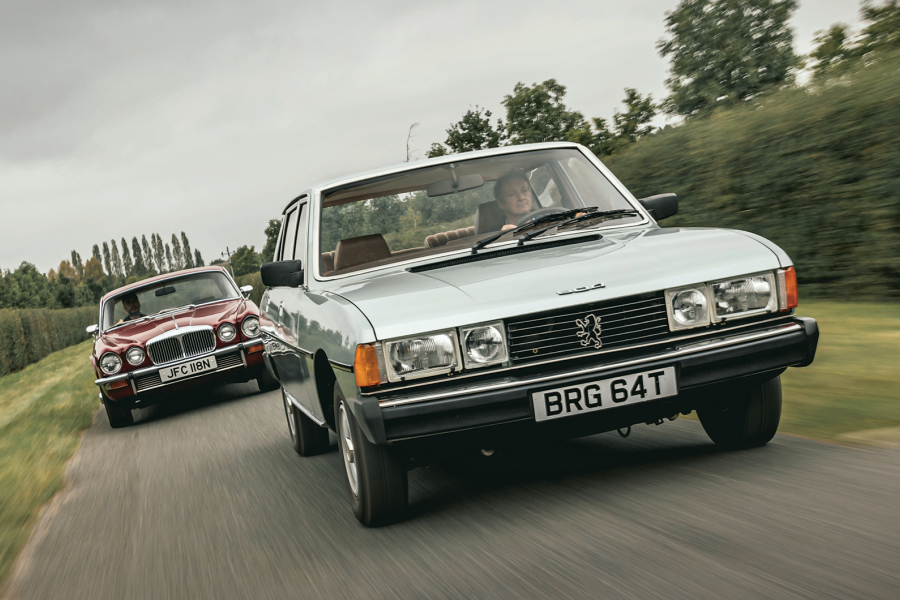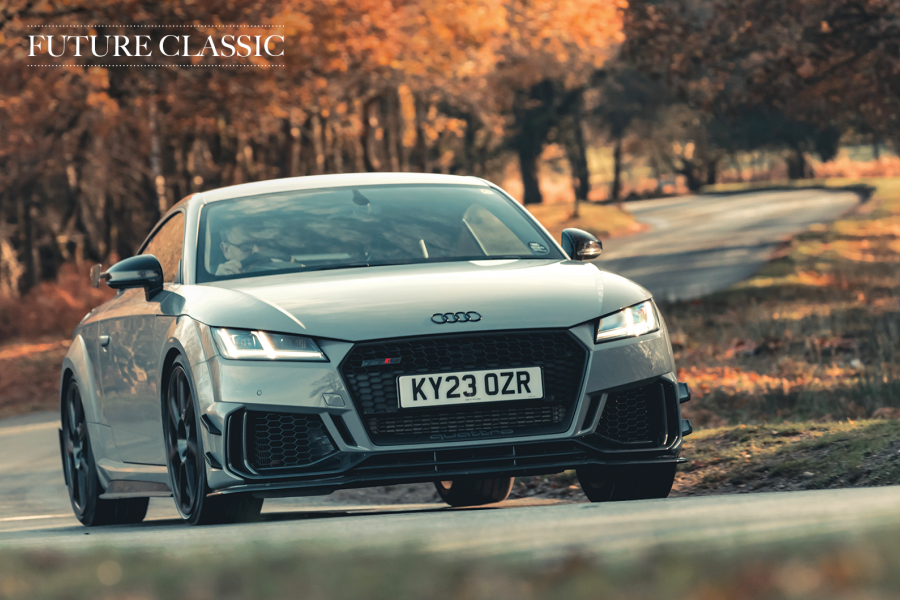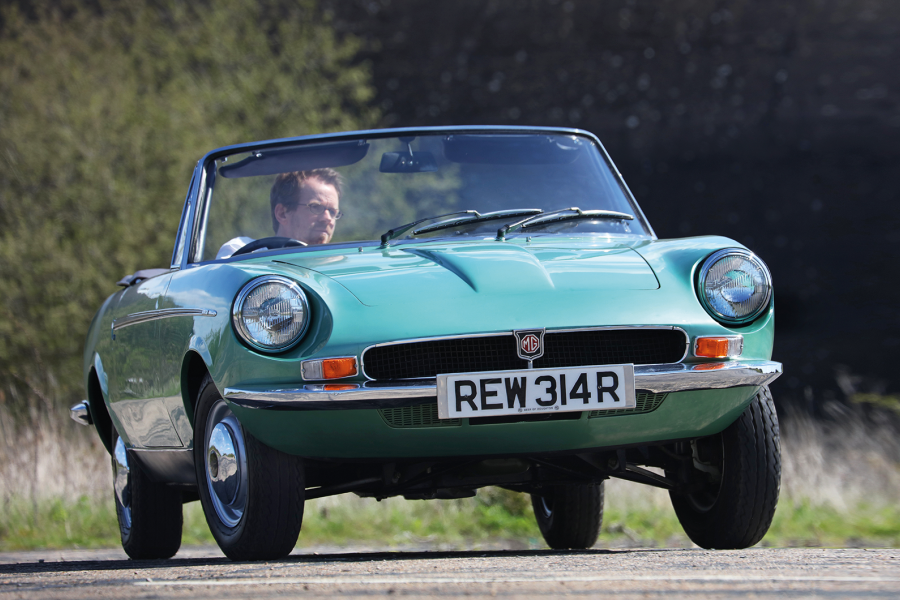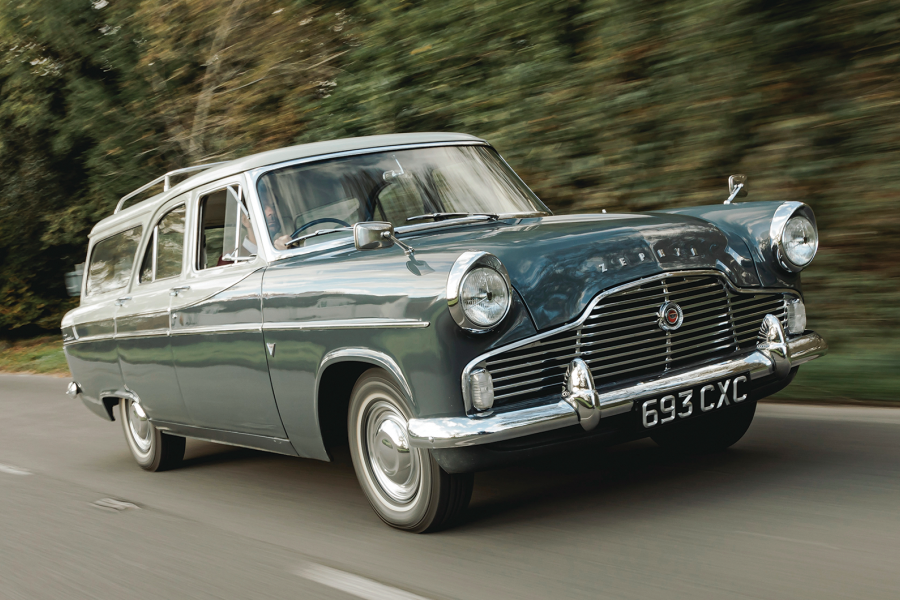“Take the headset off!” says Donaldson over the intercom. The howl is now far more intense – almost uncomfortable, in fact. It feels as if it’s
in your skull, gnawing away at your brain from the inside. You can’t hear your thoughts but you can feel yourself grinning like a loon.
After a few laps, we swap positions and I get into the passenger seat. It is a mad flurry of noise, speed and g-force as Donaldson demonstrates how ductile the 6R4’s chassis is. Filled with schoolboy-like glee, I’m reminded of being face-to-face with a new 6R4 at an NEC Motor Show of yesteryear, wondering if it could ever be as impressive as it was imposing. Now I know.
It’s not often you get to tick four cars off your bucket list in one day, but which is best? Like a glutton at Willy Wonka’s warehouse, I don’t know where to start. The T16 is the most complete car – great handling and epic performance plus good usability – yet I was bewitched by the 6R4, even if only a masochist would contemplate using it on the road.
Thanks to Alex Karidis; David Ingram at Audi UK; Simon Rudge Motorsport; Mark Donaldson:
www.markdonaldson.com
WORDS: Simon Charlesworth
PHOTOS: Tony Baker/LAT Photographic
Audi Sport quattro
Sold/number built 1983-’84/214
Construction steel monocoque with steel
and composite panels
Engine all-alloy, double-overhead-camshaft, 2133cc inline ‘five’, with KKK turbocharger, Bosch electronic fuel injection
Max power 306bhp @ 6700rpm
Max torque 258lb ft @ 3700rpm
Transmission five-speed manual,
driving all four wheels
Suspension MacPherson struts, gas dampers, anti-roll bar rear longitudinal radius arms
Steering power-assisted rack and pinion
Brakes four-pot calipers, ventilated discs, with anti-lock system
Length 13ft 8in (4160mm)
Width 6ft 1in (1860mm)
Height 4ft 5in (1344mm)
Wheelbase 7ft 3in (2204mm)
Weight 2800lb (1270kg)
0-60mph 4.8 secs
Top speed 155mph Mpg 15.3
Price new £56,000 Price now £400,000
Ford RS200
Sold/number built 1985-’86/225
Construction aluminium honeycomb platform chassis, carbon/glass/aramid-fibre composite body with steel rollcage
Engine all-alloy, double-overhead-camshaft, 16-valve 1803cc ‘four’, Garrett turbocharger, Bosch electronic fuel injection
Max power 240bhp @ 8000rpm
Max torque 207lb ft @ 5500rpm
Transmission five-speed manual,
driving all four wheels
Suspension twin coil springs, double wishbones, anti-roll bar
Steering rack and pinion
Brakes four-pot calipers, ventilated discs
Length 13ft 11/2in (4000mm)
Width 5ft 9in (1760mm)
Height 4ft 4in (1321mm)
Wheelbase 8ft 31/2in (2530mm)
Weight 2600lb (1180kg)
0-60mph 4.7 secs
Top speed 142mph Mpg n/a
Price new £50,000 Price now £200,000
Peugeot 205 T16 Série 200
Sold/number built 1983-’84/200
Construction steel monocoque and front subframe, tubular rear spaceframe, steel doors and composite panels
Engine all-alloy, double-overhead-camshaft, 16-valve 1775cc ‘four’, KKK turbocharger, Bosch electronic fuel injection
Max power 197bhp @ 6750rpm
Max torque 188lb ft @ 4000rpm
Transmission five-speed manual,
driving all four wheels
Suspension coil springs, double wishbones, anti-roll bar
Steering rack and pinion
Brakes two-pot calipers with ventilated discs
Length 12ft 6in (3820mm)
Width 5ft 7in (1700mm)
Height 4ft 5in (1354mm)
Wheelbase 12ft 4in (2540mm)
Weight 2525lb (1145kg)
0-60mph 6 secs
Top speed 114mph Mpg n/a
Price new £28,500 Price now £200,000
MG Metro 6R4 Clubman 300
Sold/number built 1985-’86/200
Construction steel chassis and subframes, GRP, steel and alloy shell with integral steel rollcage and doors
Engine all-alloy, quad-cam, 24-valve 2991cc V6, Lucas-Micos electronic fuel injection
Max power c300bhp @ c7000rpm
Max torque c250lb ft @ 6000rpm
Transmission five-speed manual,
driving all four wheels
Suspension MacPherson struts,
adjustable anti-roll bar f/r
Steering rack and pinion
Brakes four-pot calipers with ventilated discs
Length 12ft (3657mm)
Width 6ft 2in (1880mm)
Height 4ft 11in (1500mm)
Wheelbase 7ft 10in (2391mm)
Weight 2200lb (1000kg)
0-60mph 3.2 secs (250bhp Clubman)
Top speed c110-120mph
Mpg n/a
Price new £16,000 Price now £150,000
Greg MacLeman
Greg MacLeman is a contributor to and former Features Editor of Classic & Sports Car, and drives a restored and uprated 1974 Triumph 2500TC



